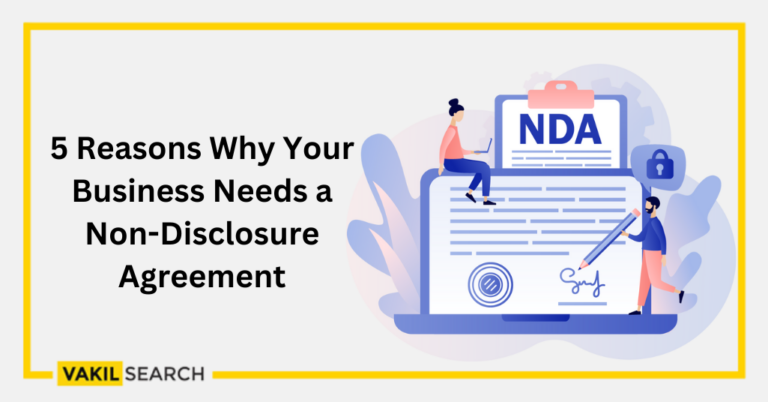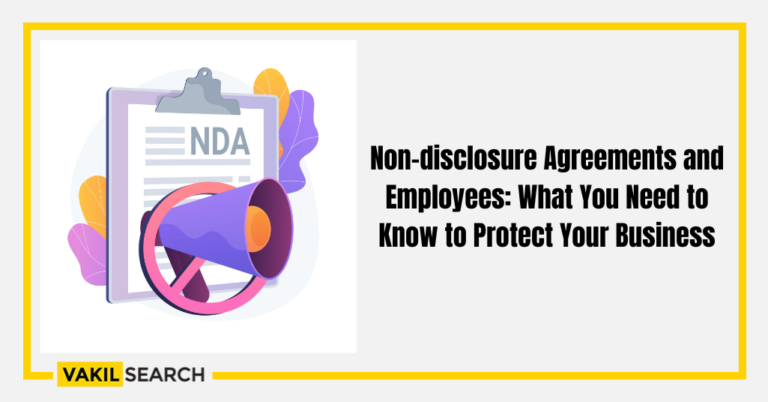The Blog introduces the important clauses one can find under NDA in India.
Non-disclosure agreements (NDAs) have grown so prevalent in corporate transactions that they have become practically generic and clichéd, leading many industry professionals to overlook their genuine importance.
To make problems worse, few people who wish to utilize one know how to do so correctly; thus, the resulting agreement is generally weak and ineffectual, if not useless and void.
Despite its negative reputation, an NDA is an essential legal contract that must be signed by any respectable corporation or a business owner. Applying this type of well-written legal agreement can harm your firm.
We’ve taken the initiative to underline its relevance here and release the ten crucial terms needed to make your non-disclosure agreements worth more than just the sheet it’s written on to bring some love back to this neglected and much-misused agreement.
The Significance Of Signing Confidentiality Agreements
First, it is advisable to address the rising perception that NDAs are obsolete: aren’t ideas the cornerstone of all trade?
You can’t have a business without a concept. You have no company until you have an enterprise. Most businesses’ net worth depends entirely on patents, copyrights, designs, methods, procedures, trade secrets, and customer base.
Remember, an NDA is an agreement between multiple parties to keep certain protected information hidden or confidential. This type of legal agreement, whether mutual or one-way, is to protect knowledge or trade secrets that are important to a company’s success.
On that topic, let’s go over the ten crucial clauses that every non-disclosure agreement should include. It is Important to understand all the NDA Clauses Online that are necessary for us.
10 Clauses for Non Disclosure Agreement:-
Clause 1: Sensitive Information Definition
The definition of secret information is, without question, the most critical aspect of a non-disclosure agreement.
This clause sets out precisely what information should not be shared. It is exactly the point of the contract.
And, as simple as it may seem, far too many justice and peace vague definitions are challenging to enforce in court.
This provision includes details on what constitutes “protected” data and a description of which formats are protected.
Put another way, ensure you’ve covered all your bases by specifying that data exchanged by Legal documents, emails, oral chats, written notes, letters, and other means are included.
Unless you’re the agreement’s Disclosing Side, you would like to cast a broad net without leaving gaps.
Clause 2: The Parties
A non-disclosure agreement should include a section that states who else the Receiver Party may reveal the sensitive information to during investigative work and business conversations and identify the Disclosing and Recipient partners.
The Recipient Party, for instance, may have its auditors and lawyers who will need to read the evidence.
They could also hire a third party, such as a visual artist, editor, or programmer, to do some work. These third-party receivers of your sensitive information are necessary to implement this legally binding contract and should be covered by the non-disclosure agreement.
The Recipient Party, for instance, may have its auditors and lawyers who will need to read the evidence.
They could also hire a third party, such as a visual artist, editor, or programmer, to do some work. These third-party receivers of your sensitive information are necessary for implementing this binding document and should be covered by the non-disclosure agreement.
Clause 3: Conditions and Time Limits
A specified timeframe should be included in every non-disclosure agreement.
When is the agreement expire, and how long must the sensitive information be kept secret?
Because the circumstance is different, there is no convenient time limit for these agreements. Some company secrets may be just as important in ten years as they are now; therefore, mention that in the contract.
Clause 4: The Information’s Authorized Use
You must specify the intended use of this sentence’s disclosed, sensitive information.
To put it another way, why are you providing this data to the Recipient Party? Please be specific. This clause is often used to define third parties, but we prefer keeping those separate for clarity.
Clause 5: The Contractual Duty to Disclose
Even the most careful and trustworthy recipients of private information may be legally obliged to reveal material they pledged to keep confidential under this arrangement at some point.
It could come from a government agency, an administrative body, or the courts.
Your non-disclosure contract should include a paragraph admitting that a legal requirement to reveal is not a violation of the agreement to protect both the Divulging and the Receiver in these situations.
Even the Clause also has some Aspects of Master Service Agreements in it that are Important in Business.
Clause 6: The Information’s Transfer
The Recipient Party usually has to return or destroy the sensitive information at the end of the arrangement.
A provision in your non-disclosure agreement should specify how and when this should happen. It is highly dependent on your relationship’s circumstances.
It’s practically impossible to destroy or restore every item of information that’s transmitted electronically, thanks to the introduction of hard disks, drop containers, memory sticks, email archiving, and so on.
Clause 7: The Authority
Even meticulous and extensive contracts cannot prevent every possible commercial conflict. As a result, breaches of trust and misunderstandings develop.
You should include a section in your non-disclosure agreement that indicates which court has the authority over any legal action resulting from this tragic event.
Clause 8: The Penalties
Your contract should include a provision detailing the permissible penalties in the event of a breach by the Recipient Party, similar to the Adjudicator discussed above.
Because the costs of a violation can be difficult to measure or establish, reaching an early agreement on what comprises an appropriate remedy will save you time and money in the long run.
Clause 9: Legal Fees Responsibilities
Many lawyers dislike clauses that directly reward the Disclosing Party attorney’s fees or punitive penalties if they prevail in a civil damages proceeding.
The argument is that including such a language makes this type of legal arrangement favour the Disfavor Party and provides them an undue incentive to pursue the suit, even over minor issues.
Clause 10: No Obligation
Finally, no non-disclosure agreement should be completed without a non-binding provision.
Because these contracts are frequently signed before negotiations for a merger, alliance, temporary venture, or other comparable collaboration, it’s critical to include a non-binding condition that permits both parties to end the arrangement.
Conclusion:-
Finally, when non-disclosure contracts are correctly implemented, they maintain the confidentiality, trade secrets, and distinctive characteristics that make your firm successful.
A well-written NDA will throw a wide net for the Data Subject and close any sure that all possibilities while maintaining a degree of equity and value for the Receiving Party.
Read more:-










